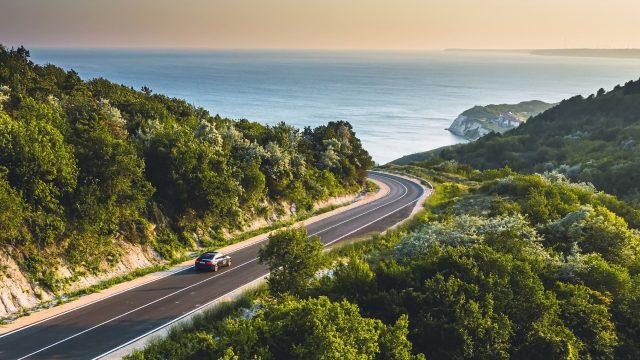Madeira in December? Yes, you read that right! I know when you think of Madeira, certain things spring to mind; a terrifying runway, Cristiano Ronaldo, and Madeira wine. There’s much more to this small island than just the wine! Visiting Madeira in December offers a lot more than just warm weather. But let’s start with the wine!
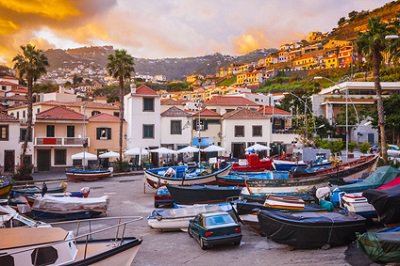 Photo by: anilah/Fotolia
Photo by: anilah/Fotolia
Madeira Wine
The islands have a history of wine making which stretches back to the Age of Exploration and the 15th century. This certainly suggests that they’ve been doing something right.
Originally, Madeira was a still wine (unfortified) which, whilst nice, had the unfortunate habit of turning and spoiling when subjected to long sea voyages. A bit of an issue for wine produced on an island! The wine makers solved the problem by copying their counterparts in Porto. They added a small amount of aguardente de cana (distilled alcohol made from cane sugar) to increase the alcohol content (ABV). This helped to stabilise the wine and ensured it lasted on arduous sea journeys. Since the 18th century, the winemakers have used brandy instead of aguardente de cana for the task.
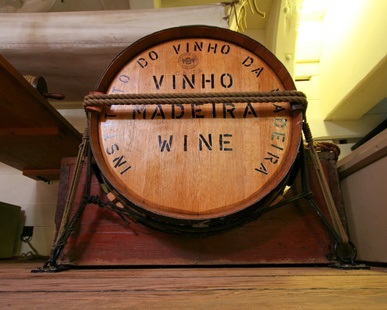 Photo by: Xavier MARCHANT/Fotolia
Photo by: Xavier MARCHANT/Fotolia
The sea expeditions also affected the wine’s taste due to the changes in temperature and constant movement. The public came to prefer this taste and as a result, vinho da roda was produced. Basically it was wine that had been sent on a long cruise before being sold, but this was an expensive way of improving the wine. Eventually the producers simply put barrels of wine in the sun and achieved the same effect.
Unfortunately, Madeira doesn’t really go in for vineyard tours the way they do in other regions. Vineyards here are small and numerous. Most owners keep the grapes themselves or sell them to the larger producers. As there are only 6 producers on the island, you’ll see the same names popping up regularly.
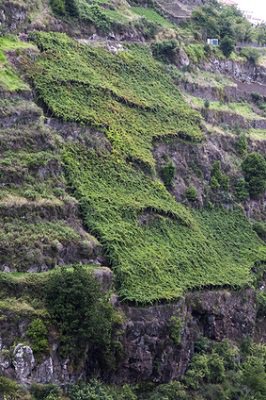 Photo by: karis48/Fotolia
Photo by: karis48/Fotolia
Make your way to Blandy’s Wine Lodge (www.blandyswinelodge.com) for a tour and a Madeira tasting. There are a selection of daily tours available starting at €3.30. Blandy’s is the most well-known producer on the island and their central location certainly helps.
Next up is Henriques & Henriques (www.henriquesehenriques.pt). You may have come across them in Waitrose but it’s not the same as trying some of their offerings on site.
Just outside Funchal is Barbeito and d’Oliveiras (www.vinhosbarbeito.com). Their offerings can be tricky to find outside Madeira so make the most of your time here. Tours start at €15 with discounts if you purchase any wine.
Madeira Wine Institute
To ensure high and consistent standards, guidelines concerning the production of Madeira were issued by the Portuguese government. The Instituto do Vinho da Madeira (IVM) was founded in 1980 and was tasked with supervising the entire process from grape to bottle. All bottles therefore bear the Selo de Garantia Madeira. This guarantees a minimum standard much like the appellation d’origine contrôlée (AOC) system used in France.
Making Madeira
Following pressing and fortification, there are two methods by which Madeira wine is produced, the Estufa and the Canteiro.
The Estufa process
This method is used for wines which are considered to be average or low quality. Basically, the wine is poured into a stainless steel (the estufa) container which has hot pipes in it. The pipes circulate hot water and gradually heat the wine to a temperature of around 45°C or 113°F for about three months. As this method heats the wine quickly, some of the natural sugars caramelise which causes the typical bitter and slightly burnt taste of cheaper Madeira wine.
The Canteiro process
The best wines and vintages are go through the Canteiro method. The wine casks are transferred to the roof of a large room, then exposed to the sun in the traditional method mentioned earlier.
Tasting Madeira
Many people assume Madeira is simply a sweet wine which lacks any depth or aroma. Whilst these bottles certainly exist, there’s more variety than you might think. You just have to know what you’re looking for.
The wine, made from the tinta negra grape, can range from dry to sweet; Sercial (dry), Verdelho (medium dry), Bual (medium sweet) and Malmsey (sweet). There are some other varieties but these are the most popular.
When tasting different wines, whether you opt for a blend or a vintage, sweet or dry (or in between), you should notice a huge variety in depth and flavour. The more basic bottles will likely be very fruity and lack complexity. If you try a vintage from the 70’s, you should notice a deeper & richer flavour, but it will be less aromatic.
Malmsey [MAH’m-zee] tends to have a rich and full flavour which compliments pastries and chocolate desserts. It’s rich and dark in colour and whilst robust, also sweet and mellow.
Bual [buh-ahl] also goes well with desserts, particularly caramel-based offerings as the semi-sweetness compliments the burnt sugar. It’s a full bodied wine with a well-rounded and fruity flavour.
Verdelho [vair-DAY’l-yo] is commonly served alongside canapes as an introduction to the meal and is tangy, elegant and dry.
Sercial [sair-s’yahl] is drunk as an aperitif with salty foods. It’s a light coloured wine with a slight scent which isn’t overpowering.
Our recommendations:
- Barbeito Boal Reserva NV: Flavours of Christmas pudding and toasted nuts, very addictive.
- Blandy’s 1998 Colheita Single Harvest Sercial: Very intense flavours, woody and spicy and very impressive.
- Blandy’s Malmsey 1985: Complex flavours of orange and toffee. Buy if you can!
If you get tired of wine, make sure you try poncha. Poncha is an alcoholic drink made with aguardente de cana, sugar, honey, lemon zest, and lemon juice. It’s a particular favourite in winter as it’s said to fight off a cold – not surprising really when you look at the ingredients. I think I’d rather have a poncha to a hot honey and lemon mix! If you drive along the coast to Ribeira Brava, make sure you stop in at the Taberna da Poncha for a glass or two (remember to drink responsibly & no drink driving).
How to store Madeira
So you’ve bought your bottle(s) – now what? Madeira should be stored in an upright position as the wine should not touch the cork in order to prevent corking. If putting down, you should change the cork every forty years!
Once open, whilst Madeira will last (almost) a lifetime, you should cover an exposed cork with wax to prevent it drying out.
Serving Madeira
Madeira is best drunk at room temperature as the colder the wine, the less flavour and aroma. Once open, it is traditional to keep the bottle moving clockwise (as with Port).
If you have an expensive bottle or a vintage, it should be opened at least 24 hours before drinking in order to allow the wine to breathe and develop.
Celebrate Christmas in Madeira
Come the winter, many of us in Northern Europe are left longing for a bit of sunshine. Madeira, with its average December temperature of 18°C, is a great choice for some winter sun.
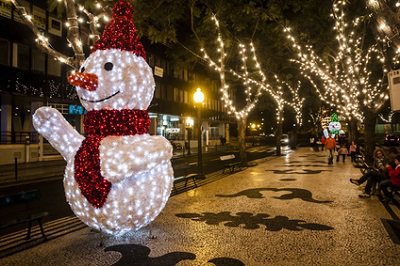 Photo by: anilah/Fotolia
Photo by: anilah/Fotolia
Madeira celebrates Christmas for a little longer than you may be used to. The festive season begins in early December and continues into January for the Feast of the Epiphany. December 23rd brings the Mercado dos Lavradores where Madeiran’s do their food shopping for Christmas and indulge in carne de vinha d´alhos – a sandwich of pork marinated in white wine and garlic. If you’re here on December 23rd, this is the place to be! The bars are open all night whilst people shop, sing carols, dance, and have fun. Make sure you join them!
Other things to do in Madeira in December
On New Year’s Eve, the focus of attention is the famous firework display in Funchal. Recognised by the Guinness Book of Records as the largest display in the world, it draws people from all over Portugal and Europe. Funchal is the centre of the display and you should head here for views of one of the most impressive firework shows you’ll ever see. The island of Porto Santo also takes part in the event if you’re staying there.
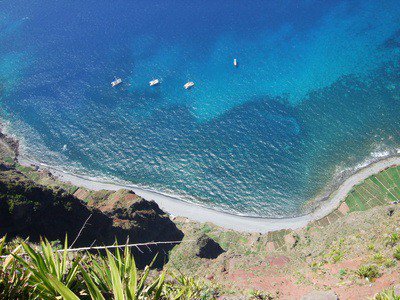 Photo by: ffotolicious/Fotolia
Photo by: ffotolicious/Fotolia
If you’re looking for something even more dramatic, make your way to Cabo Girão. Here, 580m above the ocean is the famous Cabo Girão Walkway complete with glass floor. Similar to the viewing platform at the Grand Canyon, it sticks out from the cliffs so you have a terrifying view to the sea below. Not for the faint hearted!
Head to Santo da Serra Golf Club to tackle Robert Trent Jones Sr.’s Madeiran course. In the foothills of the mountains and with 27 holes spread over the Machico, Desertas, and Serras courses, Santo da Serra offers not just great golf but great views as well. The Machico is perhaps the pick of the courses with 4 tees to choose from including the professional’s 6,200m challenge. (+351 291 550 100 or www.santodaserragolf.com).
Wine tasting for beginners
If you’re fairly new to the whole wine tasting scene, make sure you read our wine tasting guide for some tips and pointers. Alternatively, don’t forget to sign up to our newsletter and follow us on Twitter and Facebook for the latest travel tips and news.
Subscribe to our newsletter
Want our blogs emailed direct to you? Sign up below to get updates featuring our blogs and car hire top tips. Receive the best deals on car hire straight to your inbox.


